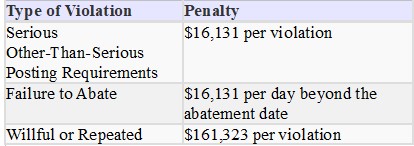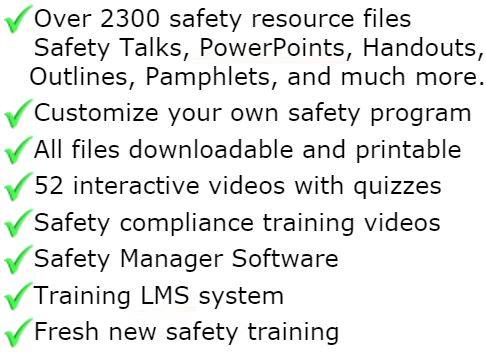
Defensive Driving Policy & Procedures
[COMPANY] is strongly committed to a sound and thorough defensive driving policy. While operating vehicles, drivers should always drive in the safest manner possible. Specifically, our drivers must operate vehicles in accordance with all provisions of this policy and obey all traffic laws as well as drive in a safe and prudent manner. Any employee who is authorized to use any vehicle for company business must successfully complete the Defensive Driving Course.
1. Assignments for classes shall be made by the employee's supervisor to ensure class quotas are met and to maintain satisfactory work schedules.
2. Frequency of employee attendance of Defensive Driving Courses shall be once per year.
3. New employees required to drive company vehicles shall be required to complete the Defensive Driving Course satisfactorily before starting their driving assignment.
The core concepts of defensive driving are:
• Recognize the hazard.
• Understand the defense.
• Act in time.
Vehicle Accident Procedure
Step 1: Stop, stay calm
Step 2: Turn on your emergency flashers as an immediate warning signal. Then do a quick evaluation of accident victims, if any, and provide assistance. Next, set out emergency warning devices on the roadway.
Step 3: Either contact local law enforcement personnel and your supervisor yourself or arrange to have someone do it for you. Be courteous and cooperative when providing information to authorities. Never admit guilt or liability at the scene of an accident. Never leave the scene of an accident.
Step 4: Write down names, license numbers and other information regarding the accident and those people involved in it. Draw a simple diagram of the accident scene. The more detail you can provide, the better it will be for insurance and/or legal purposes later. If you have a camera for use at the accident scene, document the situation with photographs from various angles.
Step 5: After the vehicle has been secured, warning devices put in place, assistance rendered to injured person(s) (if any), and law enforcement personnel contacted, you (the driver) should communicate the accident to your supervisor.
Step 6: Complete Vehicle Accident Report Form at the scene of the accident..
Defensive Driving Procedures
Intersections. Getting into and out of intersections without an accident is a mark of a good defensive driver. Besides your own skill level, intersections also demand anticipation of the actions of other drivers and taking appropriate evasive action as required.
Backing. Backing is an extremely hazardous maneuver. If you are backing with the assistance of a guide, the ultimate responsibility for the safety of the backing maneuver remains with you as the driver.
Front-End Collisions. The primary way to avoid front-end collisions is by maintaining a safe and adequate following distance. You should be prepared for possible obstructions on the roadway, either in plain sight or hidden by curves or the crests of hills. A special situation occurs at night, when speed should be kept to a level that will allow you to stop within the distance illuminated by the headlights of your vehicle.
Rear-End Collisions. As a driver, you risk being struck from behind if you do not maintain an adequate margin of safety in your own following distance. If enough space is not allowed in front of your vehicle, chances go way up that somebody can (and will) impact you from the rear.
Passing. Failure to pass safely indicates faulty judgment on your part as a defensive driver, and failure to consider one or more of the factors that need to be checked:
• Is there enough room ahead?
• Is there adequate space to move back into your lane of traffic after passing?
• Have you signaled your intentions?
Being Passed. As a driver, you must be aware of the actions of other drivers, and give way if another driver begins to sideswipe you or to cut you off. A good defensive driver will avoid problems with this kind of accident situation.
Encroaching on Other Traffic Lanes. Observant defensive drivers will not usually get trapped when other drivers change lanes abruptly. In the same manner, entrapment in merging traffic can be successfully avoided by a good defensive driver with a little preplanning and willingness to yield. Blind spots are not valid excuses for this kind of accident – allowances must be made in areas of limited sight distance.
Railroad Grade Crossings. Driving across railroad crossings, or in areas where there are rail vehicles of some sort, demands special care. Careful observance of the traffic situation is your best defense.
Oncoming Traffic. A defensive driver will avoid a collision with an oncoming vehicle at all costs. Even if the vehicle enters your lane of traffic, an accident can be avoided with some evasive maneuvers.
Turning. Turning, like passing, is a dangerous maneuver, and demands special care and an observant eye from you as a defensive driver. You should be aware of other vehicles in your path, and of the complete configuration of the turn you are about to undertake.
Pedestrians. As a sensible defensive driver, always assume that if there is a pedestrian (or small vehicle of some sort) involved in a situation, slowing down is your best defense. Be certain to give people and small vehicles the benefit of the doubt.
Extreme Weather and Road Conditions. Bad weather and other road hazards place special stress upon any defensive driver. The best rule in any kind of bad weather or extreme road condition is get off the road safely and as soon as possible. If you absolutely must continue, slowing way down and increasing following distance are your best defenses, along with increased awareness.
Fog. Fog reduces available visibility and impairs distance perception, making it perhaps the most dangerous type of extreme weather condition. Whenever possible, drivers are to avoid driving in extremely foggy conditions. Pull off the road and park safely until such time as the fog dissipates or is burned off, if at all possible. If you cannot safely pull off the road, follow these procedures:
• Never assume the depth or thickness of any fog. Fog can range from a momentary blurring of the windshield to being several miles thick.
• Slow your vehicle's speed. Reduction in speed should be done gradually in order to avoid becoming a hazard for other motorists. Determining a correct and safe speed depends on the thickness of the fog and is left to your best judgment.
• Use low-beam headlights only when driving in fog. Low-beams serve two purposes. They help you see the immediate roadway and also allow other motorists to see your vehicle.
• Avoid the use of high-beam headlights while driving in fog. The water particles that make up fog will reflect more light back at you than onto the roadway when high beams are used, and will further reduce visibility for you.
• Make use of windshield wipers and the defroster when driving in fog. Driving in foggy conditions will cause a constant fine mist of water to develop on the vehicle's windshield, reducing visibility in the process. Using the windshield wipers and defroster will alleviate this condition.
• Avoid passing other vehicles while driving in fog.
• Avoid stopping on any roadway while driving in foggy conditions unless absolutely necessary. If you must stop, use the emergency or breakdown lane, activate your emergency flashers, turn off the headlights.
Rain. Rain causes roadways to become slippery, especially when it first begins. Roadways become covered with a thin layer of oil and other residues. When rain mixes with this layer, it results in an extremely slippery and dangerous road surface. This condition remains until additional rain can break down and wash away the oily mixture from the pavement. This process can take anywhere from a few minutes to several hours, depending on the severity of the rain.
Water on the road surface can also create a potential hazard of hydroplaning. Hydroplaning happens when a thin layer of water separates the vehicle's tires from the road surface. When a vehicle is hydroplaning, it is literally riding on water. When the tires ride on water, they lose all traction and create an extremely dangerous situation. The faster a vehicle travels on standing water, the greater the chance of hydroplaning. Reducing speed is the best and safest way to avoid hydroplaning.
Rain also reduces visibility. Because rain presents these hazards, drivers are expected to adhere to the following procedures when driving in rainy conditions:
• Slow the vehicle's speed to avoid hydroplaning. Reduction in speed should be done gradually in order to avoid becoming a hazard for other motorists. Determining the correct and safe speed depends on how heavy the rain is and will be left to your best judgment.
• Increase your following distance from other motorists. Since rain causes the road surface to become slippery, you need to allow for greater stopping distance if the need to stop arises.
• Use windshield wipers and the defroster when driving in rain. Driving in rainy conditions will cause a constant film of water to develop on the vehicle's windshield, reducing visibility in the process. Using the windshield wipers and defroster will alleviate this condition.
• You should avoid passing other vehicles while driving in rain. In addition, you are encouraged to follow other vehicles at a safe distance since vehicles traveling ahead will throw water off the pavement and leave "tracks". Driving in these tracks will give you the best possible traction under rainy conditions.
Snow. Snow, depending on the type and severity, can present a variety of dangerous conditions. Because of this, the following procedures have been developed for this defensive driving policy:
• Light, powdery snow presents few problems since it is quickly blown of the road surface. However if there is enough of this type of snow to cover the roadway, it will form a slick, smooth surface. You should reduce speed and increase following distance. Determining the correct speed and safe following distance will be left to your best judgment.
• Heavier, slushy snow can affect vehicle control. If snow becomes hard packed it can cause an ice hazard on the road surface. Again, you should reduce speed and increase following distance. Determining the correct speed and safe following distance will be left to your best judgment.
• All slow maneuvers such as starting out, steering, backing, and turning should be done smoothly and with extreme care to minimize skids and slides.
• Falling or blowing snow can greatly reduce visibility. In addition, falling and blowing snow can make it hard to see the road, road markings, road signs, and off ramps. If you must continue in snowy conditions, reducing speed and increasing following distance are the best techniques a driver can use to maintain vehicle control.
• As with driving in foggy conditions, the use of high beam headlights while driving in snowy conditions should be avoided at all times. The high-beam "shooting" light will reflect off falling and blowing snow and reflect back at you, further reducing visibility.
• Drivers will also be educated on the dangers of "snow hypnosis". Snow hypnosis occurs when a driver is traveling directly into heavy snow and begins to focus on the falling snow instead of the road ahead. This can cause a

GET INSTANT ACCESS
to THE MEMBERS LIBRARY
Safety materials created by safety professionals.
Access to the Safety Manager software.
Wide variety of safety videos and courses.
**Brand New** Safety Training Management System
Pre-Made Safety Materials Ready For Use
Created by experienced safety professionals & risk consultants. Saving you time, money, and risk of injuries.
95% of the work already done.
Below are the maximum penalty amounts, with the annual adjustment for inflation, that may be assessed after Jan. 15, 2024. (See OSHA Memo, Jan. 8, 2024).

**New OSHA HEAT 90 DAY**
>>Download Free HERE<<
**New 2024 OSHA 300 Form**
>>Download Free HERE<<
**Brand New**
Free with full membership subscription
Training LMS System
Ask The Safety Consultant
Safety Equipment Deal Finder

“SafetyInfo.com is the first go-to website for safety professionals and companies to use in establishing a solid safety program"
-Mike McKenzie, Certified Safety & Health Manager (CSHM), McSafety Solutions™
Note: You must have a full subscription to the Safety Library in order to use this material. Any use outside of your organization, for resell, or without an active membership is strictly prohibited and may result in prosecution under copyright infringement laws. Please contact us first, if you would be interested in reselling or using our materials for reproduction.
Inside the Members Library
Topic Index
Accident Prevention
Air Quality
Asbestos
Bloodborne Pathogens
Boilers
Chemical Safety
Compressed Gas
Confined Space
Construction
Construction Worksite
Cranes & Slings
Driver / Fleet Safety
Drug Free Workplace
Electrical
Emergency Management
Engineering Safety
Environmental
Equipment
Ergonomics
Fall Protection
Fire Safety & Prevention
First Aid
Flammable Materials
Forklifts
Hazard Communication
Hazardous Materials
Hearing Protection
Heat Stress
Hot Work
Housekeeping
Job Safety Analysis
Laboratory
Ladders
Lead
Lockout-Tagout
Machinery & Equipment
Material Handling
MSDS (SDS)
Medical & First Aid
Occupational Health
Office Safety
Off the Job Safety
Personal Protection
Process Safety
Record Keeping
Respiratory Protection
Silica Safety
Rules & Policies
Signs & Labels
Slips, Trips & Fall
Training
Terrorism Programs
Tool Safety
Vehicle & Driver
Violence Programs
Welding & Hot Work
Training Videos
Library Index
Training Materials
Videos/Courses
Talks
Articles
PowerPoint
Handouts
Training Overheads
Quizzes
Supervisor Briefs
Management Briefs
Safety Sessions
2 Minute OSHA Safety Talks
Pamphlets
First Aid Training
Supervisor Training
Hazardous Materials
Bomb Threat
Crossword Puzzles
Biological Agents
Forms & Documents
Forms
Checklists
Audit Guides
Inspections Guides
Signs & Labels
Environmental Audit Guides
Recordkeeping - OSHA 300
Sign & Label Maker
Safety Management Resources
Safety Manuals/Written Programs
Ergonomic Programs
Emergency Plans
Process Safety Management
Construction Safety
Occupational Health
Environmental
Topic Sheets
DOT Fleet-Driver
Hazardous Materials
Chemical Safety
Drug Free Workplace
Terrorism Programs
Development Guides
Safety Manager Software
Safety References & Graphics
Technical Safety Information
Posters
Topic & Fact Sheets
Development Information
Job Specific Safety Rules
Terrorism
Calculators
Safety Comic Strips
New Safety Training System
Schedule and train your employees with our materials. Add unlimited amount of employees. Record all progress and issue certificates. For group and individual training sessions.

